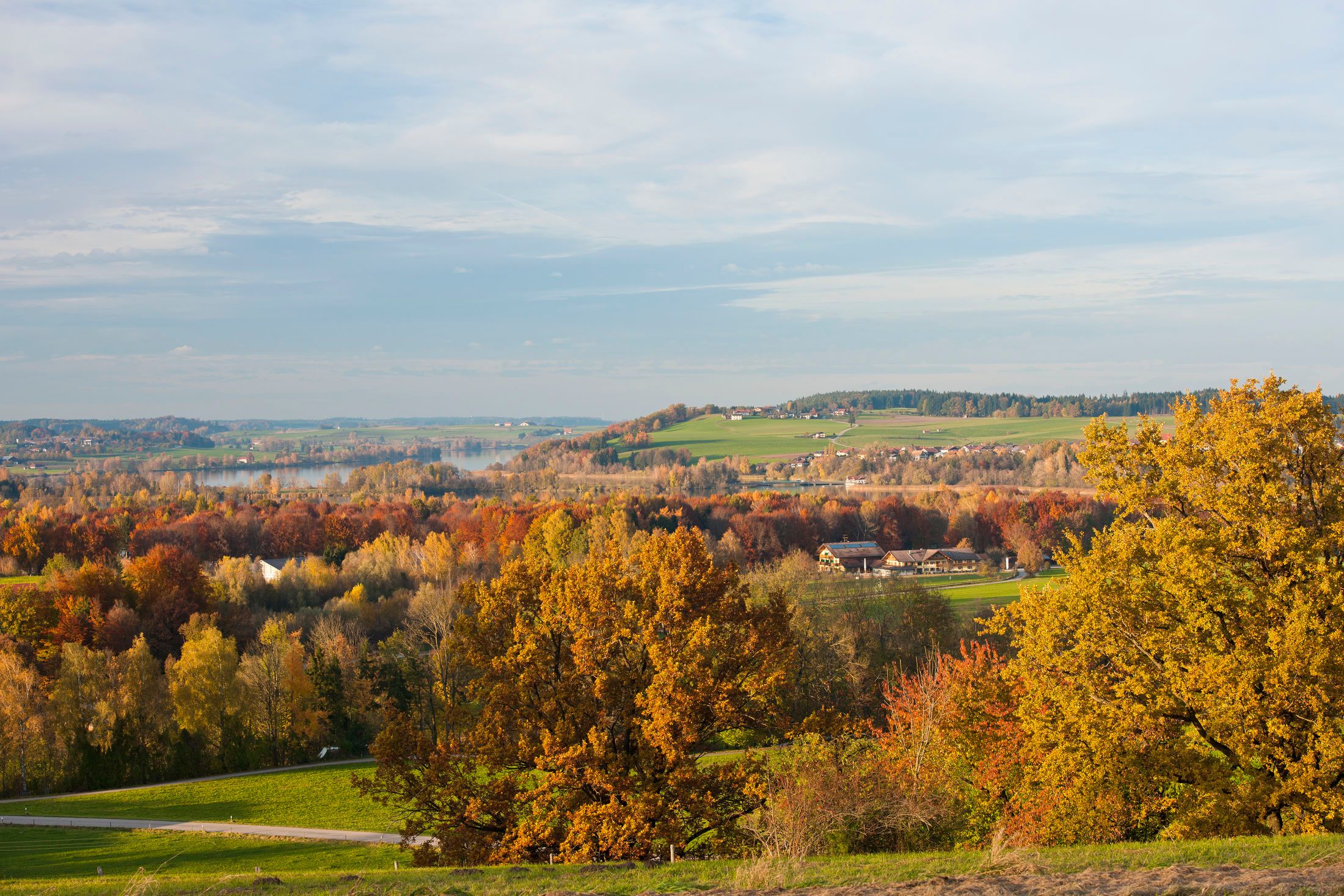The Mühlberg in Waging is an ideal destination for the whole family and the effort is rewarded with a fantastic view.


The Mühlberg in Waging is an ideal destination for the whole family and the effort is rewarded with a fantastic view.
Tour description:
Waging - Nepomuk Chapel - Pilgrimage Church - Waging
The trail starts in Waging and passes the cemetery. Under the main road, then to the right. At the Nepomuk chapel, the walker turns left and shortly afterwards turns right. The short, promising ascent that follows leads past 14 Stations of the Crossto the Maria Mühlberg pilgrimage church . The walk now reaches its climax - with a breathtaking view of Lake Waginger and the foothills of the Alps . These distant views are a true reward for the effort of the hike. Due to its length and the few meters in altitude, the panoramic mountain is also an ideal destination for small summiteers.
You return past the church to a large oak tree . Here is another turning to the right, up to a forest ditch. The hiker now walks along the stream until you reach the bridge, which is at the beginning of the ascent path.
The history of the pilgrimage church goes back to the 17th century. At that time, a farmer from the area made a pilgrimage to Ettal and brought a paper picture of the Mother of God with him. He attached this paper to a pear tree on the Mühlberg. Soon the first pious people were drawn to the Mühlberg to pray in front of the picture. The pastor of Waging at the time had a sacrificial box set up, which quickly filled up. After years of fighting to build a church, Salzburg gave permission in 1709 to build a church on this site. Today the church presents itself to visitors like this: the altar of the church comes from Xaver Hörmann from Ischl, the altarpiece from the hand of the artist Rudholzer from Laufen. The ceiling painting by the academic painter Josef Rattensberger depicts the origin of the pilgrimage according to a legend. The church contains one of the largest collections of votive tablets in south-eastern Bavaria. The votive tablets were donated as a thank you after invoking the Mother of God on the Mühlberg in the event of illness, war, misfortune and much more. The oldest votive tablets go back to 1671. On the west side of the church is the picture of the protective cloak Madonna, painted in 1947 by the painter Gschwendner from Karlstein. The path to the pilgrimage church leads past a Way of the Cross and two chapels.